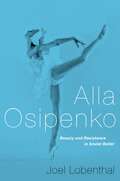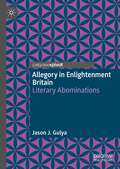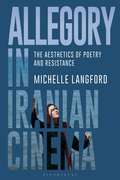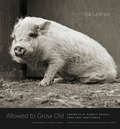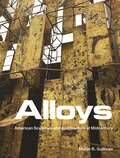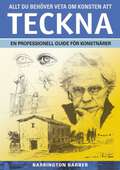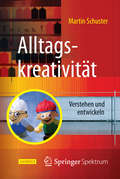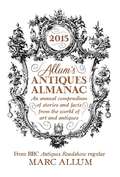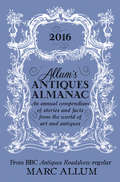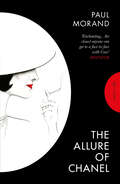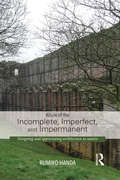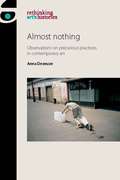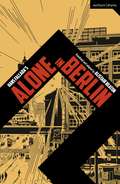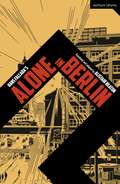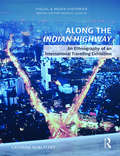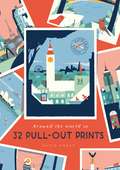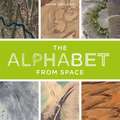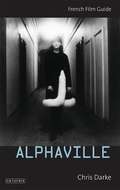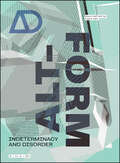- Table View
- List View
Alla Osipenko: Beauty and Resistance in Soviet Ballet
by Joel LobenthalAlla Osipenko is the gripping story of one of history's greatest ballerinas, a courageous rebel who paid the price for speaking truth to the Soviet State. She studied with Agrippina Vaganova, the most revered and influential of all Russian ballet instructors, and in 1950, she joined the Mariinsky (then-Kirov) Ballet, where her lines, shapes, and movements both exemplified the venerable traditions of Russian ballet and propelled those traditions forward into uncharted and experimental realms. She was the first of her generation of Kirov stars to enchant the West when she danced in Paris in 1956. But dancing for the establishment had its downsides, and Osipenko's sharp tongue and marked independence, as well as her almost-reckless flouting of Soviet rules for personal and political conduct, soon found her all but quarantined in Russia. An internationally acclaimed ballerina at the height of her career, she found that she would now have to prevail in the face of every attempt by the Soviet state and the Kirov administration to humble her. In Alla Osipenko, acclaimed dance writer Joel Lobenthal tells Osipenko's story for the first time in English, drawing on 40 interviews with the prima ballerina, and tracing her life from Classical darling to avant-garde rebel. Throughout the book, Osipenko talks frankly and freely in a way that few Russians of her generation have allowed themselves to. Her voice rises above the incidents as unhesitating and graceful as her legendary adagios. Candid, irreverent, and, above all, independent -- Osipenko and her story open a window into a fascinating and little-discussed world.
Alla Osipenko: Beauty and Resistance in Soviet Ballet
by Joel LobenthalAlla Osipenko is the gripping story of one of history's greatest ballerinas, a courageous rebel who paid the price for speaking truth to the Soviet State. She studied with Agrippina Vaganova, the most revered and influential of all Russian ballet instructors, and in 1950, she joined the Mariinsky (then-Kirov) Ballet, where her lines, shapes, and movements both exemplified the venerable traditions of Russian ballet and propelled those traditions forward into uncharted and experimental realms. She was the first of her generation of Kirov stars to enchant the West when she danced in Paris in 1956. But dancing for the establishment had its downsides, and Osipenko's sharp tongue and marked independence, as well as her almost-reckless flouting of Soviet rules for personal and political conduct, soon found her all but quarantined in Russia. An internationally acclaimed ballerina at the height of her career, she found that she would now have to prevail in the face of every attempt by the Soviet state and the Kirov administration to humble her. In Alla Osipenko, acclaimed dance writer Joel Lobenthal tells Osipenko's story for the first time in English, drawing on 40 interviews with the prima ballerina, and tracing her life from Classical darling to avant-garde rebel. Throughout the book, Osipenko talks frankly and freely in a way that few Russians of her generation have allowed themselves to. Her voice rises above the incidents as unhesitating and graceful as her legendary adagios. Candid, irreverent, and, above all, independent -- Osipenko and her story open a window into a fascinating and little-discussed world.
Allegory in Enlightenment Britain: Literary Abominations
by Jason J. GulyaThis Palgrave Pivot argues for the significance of allegory in Enlightenment writing. While eighteenth-century allegory has often been dismissed as an inadequate form, both in its time and in later scholarship, this short book reveals how Enlightenment writers adapted allegory to the cultural changes of the time. It examines how these writers analyzed earlier allegories with scientific precision and broke up allegory into parts to combine it with other genres. These experimentations in allegory reflected the effects of empiricism, secularization and a modern aesthetic that were transforming Enlightenment culture. Using a broad range of examples – including classics of the genre, eighteenth-century texts and periodicals – this book argues that the eighteenth century helped make allegory the flexible, protean literary form it is today.
Allegory in Iranian Cinema: The Aesthetics of Poetry and Resistance (International Library Of The Moving Image Ser.)
by Michelle LangfordIranian filmmakers have long been recognised for creating a vibrant, aesthetically rich cinema whilst working under strict state censorship regulations. As Michelle Langford reveals, many have found indirect, allegorical ways of expressing forbidden topics and issues in their films. But for many, allegory is much more than a foil against haphazardly applied censorship rules. Drawing on a long history of allegorical expression in Persian poetry and the arts, allegory has become an integral part of the poetics of Iranian cinema. Allegory in Iranian Cinema explores the allegorical aesthetics of Iranian cinema, explaining how it has emerged from deep cultural traditions and how it functions as a strategy for both supporting and resisting dominant ideology. As well as tracing the roots of allegory in Iranian cinema before and after the 1979 revolution, Langford also theorizes this cinematic mode. She draws on a range of cinematic, philosophical and cultural concepts - developed by thinkers such as Walter Benjamin, Gilles Deleuze, Pier Paolo Pasolini, Christian Metz and Vivian Sobchack - to provide a theoretical framework for detailed analyses of films by renowned directors of the pre-and post-revolutionary eras including Masoud Kimiai, Dariush Mehrjui, Ebrahim Golestan, Kamran Shirdel, Majid Majidi, Jafar Panahi, Marziyeh Meshkini, Mohsen Makhmalbaf, Rakhshan Bani-Etemad and Asghar Farhadi.Allegory in Iranian Cinema explains how a centuries-old means of expression, interpretation, encoding and decoding becomes, in the hands of Iran's most skilled cineastes, a powerful tool with which to critique and challenge social and cultural norms.
Allegory in Iranian Cinema: The Aesthetics of Poetry and Resistance
by Michelle LangfordIranian filmmakers have long been recognised for creating a vibrant, aesthetically rich cinema whilst working under strict state censorship regulations. As Michelle Langford reveals, many have found indirect, allegorical ways of expressing forbidden topics and issues in their films. But for many, allegory is much more than a foil against haphazardly applied censorship rules. Drawing on a long history of allegorical expression in Persian poetry and the arts, allegory has become an integral part of the poetics of Iranian cinema. Allegory in Iranian Cinema explores the allegorical aesthetics of Iranian cinema, explaining how it has emerged from deep cultural traditions and how it functions as a strategy for both supporting and resisting dominant ideology. As well as tracing the roots of allegory in Iranian cinema before and after the 1979 revolution, Langford also theorizes this cinematic mode. She draws on a range of cinematic, philosophical and cultural concepts - developed by thinkers such as Walter Benjamin, Gilles Deleuze, Pier Paolo Pasolini, Christian Metz and Vivian Sobchack - to provide a theoretical framework for detailed analyses of films by renowned directors of the pre-and post-revolutionary eras including Masoud Kimiai, Dariush Mehrjui, Ebrahim Golestan, Kamran Shirdel, Majid Majidi, Jafar Panahi, Marziyeh Meshkini, Mohsen Makhmalbaf, Rakhshan Bani-Etemad and Asghar Farhadi.Allegory in Iranian Cinema explains how a centuries-old means of expression, interpretation, encoding and decoding becomes, in the hands of Iran's most skilled cineastes, a powerful tool with which to critique and challenge social and cultural norms.
Allowed to Grow Old: Portraits of Elderly Animals from Farm Sanctuaries
by Isa LeshkoThere’s nothing quite like a relationship with an aged pet—a dog or cat who has been at our side for years, forming an ineffable bond. Pampered pets, however, are a rarity among animals who have been domesticated. Farm animals, for example, are usually slaughtered before their first birthday. We never stop to think about it, but the typical images we see of cows, chickens, pigs, and the like are of young animals. What would we see if they were allowed to grow old? Isa Leshko shows us, brilliantly, with this collection of portraits. To create these portraits, she spent hours with her subjects, gaining their trust and putting them at ease. The resulting images reveal the unique personality of each animal. It’s impossible to look away from the animals in these images as they unforgettably meet our gaze, simultaneously calm and challenging. In these photographs we see the cumulative effects of the hardships of industrialized farm life, but also the healing that time can bring, and the dignity that can emerge when farm animals are allowed to age on their own terms. Each portrait is accompanied by a brief biographical note about its subject, and the book is rounded out with essays that explore the history of animal photography, the place of beauty in activist art, and much more. Open this book to any page. Meet Teresa, a thirteen-year-old Yorkshire Pig, or Melvin, an eleven-year-old Angora Goat, or Tom, a seven-year-old Broad Breasted White Turkey. You’ll never forget them.
Allowed to Grow Old: Portraits of Elderly Animals from Farm Sanctuaries
by Isa LeshkoThere’s nothing quite like a relationship with an aged pet—a dog or cat who has been at our side for years, forming an ineffable bond. Pampered pets, however, are a rarity among animals who have been domesticated. Farm animals, for example, are usually slaughtered before their first birthday. We never stop to think about it, but the typical images we see of cows, chickens, pigs, and the like are of young animals. What would we see if they were allowed to grow old? Isa Leshko shows us, brilliantly, with this collection of portraits. To create these portraits, she spent hours with her subjects, gaining their trust and putting them at ease. The resulting images reveal the unique personality of each animal. It’s impossible to look away from the animals in these images as they unforgettably meet our gaze, simultaneously calm and challenging. In these photographs we see the cumulative effects of the hardships of industrialized farm life, but also the healing that time can bring, and the dignity that can emerge when farm animals are allowed to age on their own terms. Each portrait is accompanied by a brief biographical note about its subject, and the book is rounded out with essays that explore the history of animal photography, the place of beauty in activist art, and much more. Open this book to any page. Meet Teresa, a thirteen-year-old Yorkshire Pig, or Melvin, an eleven-year-old Angora Goat, or Tom, a seven-year-old Broad Breasted White Turkey. You’ll never forget them.
Alloys: American Sculpture and Architecture at Midcentury
by Marin R. SullivanA new look at the interrelationship of architecture and sculpture during one of the richest periods of American modern designAlloys looks at a unique period of synergy and exchange in the postwar United States, when sculpture profoundly shaped architecture, and vice versa. Leading architects such as Gordon Bunshaft and Eero Saarinen turned to sculptors including Harry Bertoia, Alexander Calder, Richard Lippold, and Isamu Noguchi to produce site-determined, large-scale sculptures tailored for their buildings’ highly visible and well-traversed threshold spaces. The parameters of these spaces—atriums, lobbies, plazas, and entryways—led to various designs like sculptural walls, ceilings, and screens that not only embraced new industrial materials and processes, but also demonstrated art’s ability to merge with lived architectural spaces.Marin Sullivan argues that these sculptural commissions represent an alternate history of midcentury American art. Rather than singular masterworks by lone geniuses, some of the era’s most notable spaces—Philip Johnson’s Four Seasons Restaurant in Mies van der Rohe’s Seagram Building, Max Abramovitz’s Philharmonic Hall at Lincoln Center, and Pietro Belluschi and Walter Gropius’s Pan Am Building—would be diminished without the collaborative efforts of architects and artists. At the same time, the artistic creations within these spaces could not exist anywhere else. Sullivan shows that the principle of synergy provides an ideal framework to assess this pronounced relationship between sculpture and architecture. She also explores the afterlives of these postwar commissions in the decades since their construction.A fresh consideration of sculpture’s relationship to architectural design and functionality following World War II, Alloys highlights the affinities between the two fields and the ways their connections remain with us today.
Allt du behöver veta om konsten att teckna: En professionell guide för konstnärer
by Barrington BarberI denna fristående fortsättning på Teckningskonstens grunder leder Barrington Barber den blivande konstnären ytterligare ett steg på vägen till större skicklighet och kompetens. Har du läst hans tidigare bok vet du redan att ju mer du övar, desto fler visuella överraskningar ställs du inför och desto fler problem har du att övervinna. I Allt du behöver veta om konsten att teckna visar han hur du löser sådana svårigheter, nämligen genom att tillämpa mer avancerade metoder och genom den ökade medvetenhet som kommer av att noga studera olika objekt. Författaren visar dessutom läsaren hur man blir mer visuellt perceptiv, för att på så sätt kunna ge uttryck åt känslor och tankar i sina egna verk och för att skaffa information för framtida användning.När du tagit till dig de tekniker boken beskriver kommer du att märka hur din förståelse för och uppskattning av omvärlden ökar och hur dörrar öppnas till en hel värld av nya möjligheter.Boken innehåller över 370 illustrationer.
Alltagskreativität: Verstehen und entwickeln
by Martin SchusterDieses Werk ermutigt Sie dazu, Ihre eigene Kreativität zu entdecken und zu entfalten. Basierend auf den Erkenntnissen der Kreativitätsforschung zeigt Ihnen der Autor auf, dass nicht nur geniale Erfinder und Entdecker kreativ und bedeutsam für unsere Kulturentwicklung sind. Ein jeder kann die eigene Kreativität im Rahmen der Alltagskreativität weiter entwickeln. Erfahren Sie am Beispiel von Erfindern und Entdeckern wie Ideen entstehen und was das kreative Werk begünstigt. Diese inspirierende Anregung wird durch praktische Übungen ergänzt, die Ihnen helfen, neue Schritte zu wagen und sich auf eine Entdeckungsreise zu begeben.
Allum's Antiques Almanac 2015: An Annual Compendium of Stories and Facts From the World of Art and Antiques
by Marc AllumFrom the BBC Antiques Roadshow specialist and author who brought you The Antiques Magpie comes the first annual almanac keeping you bang up to date with the vibrant, pacey and often amusingly idiosyncratic global art and antiques market. Find out: * How much the wedding ring of Lee Harvey Oswald sold for * What the world’s most expensive printed book cost per word * Which First World War artefacts have enthused collectors amid the centenary commemorations ...and much more Written with Marc’s trademark blend of knowledge, enthusiasm, irreverence and wit, Allum’s Antiques Almanac 2015 provides a unique insight into a boundless world fuelled by history, avarice and passion, making it a must-read for the inherent collector in all of us.
Allum's Antiques Almanac 2016: An Annual Compendium of Stories and Facts From the World of Art and Antiques
by Marc AllumFrom BBC Antiques Roadshow specialist and author Marc Allum comes the second instalment of his annual almanac, revealing the current news, tall tales and tasty titbits from the year in art, antiques and collectables: What do London Bridge and a £40,000 corkscrew have in common? Which famous pop star depicted by Andy Warhol realised £51.6 million at a recent auction? How much did Oliver Cromwell’s coffin plate sell for, and what happened to his famous wart? Which Hollywood film led to the recovery of a Hungarian avant garde masterpiece? What would a collector pay for the real Batmobile? Why did a tiny portrait of Mozart - only four centimetres high - sell for £218,500? Answers to these and many other fascinating questions make this the essential guide this autumn for all ardent fans of art, antiques and collectables.
The Allure of Chanel (Pushkin Collection)
by Paul MorandThe story of Coco Chanel s life, as told by her to Paul MorandCoco Chanel invited Paul Morand to visit her in St Moritz at the end of the Second World War when he was given the opportunity to write her memoirs; his notes of their conversations were put away in a drawer and only came to light one year after Chanel's death. Through Morand's transcription of their conversations, Chanel tells us about her friendship with Misia Sert, the men in her life - Boy Capel, the Duke of Westminster, artists such as Diaghilev, her philosophy of fashion and the story behind the legendary Number 5 perfume...The memories of Chanel told in her own words provide vivid sketches and portray the strength of Coco's character, leaving us with an extraordinary insight into Chanel the woman and the woman who created Chanel.'It's an interesting memoir because it s all about what she thinks not what she did.' --David Patrick Columbia, The New York Social Diary'Morand was a citizen of the world, with a sharp eye and a neat turn of phras-- The Tablet'This enchanting, tiny book is the closest anyone can get to a face-to-face with Coco. It's written in her voice ('that voice that gushed forth from her mouth like lava') and in her words ('those words that crackled like dried vines'), and though it's full of lies, omissions and contradictions, there's enough raw truth in it to reflect the extraordinary woman who was Chanel, even though glimpsed shard by shard in a broken mirror.' --The Spectator'Paul Morand recaptures a WWII-era conversation between the author and the fashion icon. --Publisher's Weekly'Reads beautifully ... this enchanting book is the closest anyone can get to a face-to-face with Coco... written in her voice and in her words.'--The Spectator 'Without a doubt the best French writer of the 20th century.' Philippe Sollers'Morand was the all-round aesthete.' Nicholas Lezard, The Guardian'Admired both by Ezra Pound and by Marcel Proust as a pioneer craftsman of Modernist French prose (...) The sheer shapeliness of his prose recalls Hemingway; the urbanity of his self-destructiveness compares with Fitzgerald's; and his camera eye is as lucidly stroboscopic as that of Dos Passos. He is, like Victor Segalen, Blaise Cendrars, Valery Larbaud, and Saint-John Perse, one of the great nomads of 20th-century French literature, racing through the apocalypse with the haste and glamor of an Orient Express. It is a pity we should have had to wait this long to catch up with him.'--The New York Times;Paul Morand was born in Paris in 1888 and after studying at the Ecole des Science Politiques he joined the diplomatic corps, serving in London, Rome, Berne and Bucharest. His first collection of stories Tender Shoots (Tendres Stocks, 1921), had an introduction by his friend Marcel Proust. In a long and busy life, he found time to write poetry, novels, short stories and travel books. Morand was made a member of the Academie Francaise in 1963. He was married to the Romanian princess Helene Soutzo, and he died in 1976.
Allure of the Incomplete, Imperfect, and Impermanent: Designing and Appreciating Architecture as Nature
by Rumiko HandaArchitects have long operated based on the assumption that a building is 'complete' once construction has finished. Striving to create a perfect building, they wish for it to stay in its original state indefinitely, viewing any subsequent alterations as unintended effects or the results of degeneration. The ideal is for a piece of architecture to remain permanently perfect and complete. This contrasts sharply with reality where changes take place as people move in, requirements change, events happen, and building materials are subject to wear and tear. Rumiko Handa argues it is time to correct this imbalance. Using examples ranging from the Roman Coliseum to Japanese tea rooms, she draws attention to an area that is usually ignored: the allure of incomplete, imperfect and impermanent architecture. By focusing on what happens to buildings after they are ‘complete’, she shows that the ‘afterlife’ is in fact the very ‘life’ of a building. However, the book goes beyond theoretical debate. Addressing professionals as well as architecture students and educators, it persuades architects of the necessity to anticipate possible future changes and to incorporate these into their original designs.
Allure of the Incomplete, Imperfect, and Impermanent: Designing and Appreciating Architecture as Nature
by Rumiko HandaArchitects have long operated based on the assumption that a building is 'complete' once construction has finished. Striving to create a perfect building, they wish for it to stay in its original state indefinitely, viewing any subsequent alterations as unintended effects or the results of degeneration. The ideal is for a piece of architecture to remain permanently perfect and complete. This contrasts sharply with reality where changes take place as people move in, requirements change, events happen, and building materials are subject to wear and tear. Rumiko Handa argues it is time to correct this imbalance. Using examples ranging from the Roman Coliseum to Japanese tea rooms, she draws attention to an area that is usually ignored: the allure of incomplete, imperfect and impermanent architecture. By focusing on what happens to buildings after they are ‘complete’, she shows that the ‘afterlife’ is in fact the very ‘life’ of a building. However, the book goes beyond theoretical debate. Addressing professionals as well as architecture students and educators, it persuades architects of the necessity to anticipate possible future changes and to incorporate these into their original designs.
Almost nothing: Observations on precarious practices in contemporary art (Rethinking Art's Histories)
by Anna DezeuzePresents a short history of artworks at risk of passing unnoticed because they look like trash, or are little more than commonplace objects and fleeting gestures that disappear into the fabric of everyday life
Almost nothing: Observations on precarious practices in contemporary art (Rethinking Art's Histories)
by Anna DezeuzeWhat does an assemblage made out of crumpled newspaper have in common with an empty room in which the lights go on and off every five seconds? This book argues that they are both examples of a 'precarious' art that flourished from the late 1950s to the first decade of the twenty-first century, in light of a growing awareness of the individual's fragile existence in capitalist society. Focusing on comparative case studies drawn from European, North and South American practices, this study maps out a network of similar concerns and practices, while outlining its evolution from the 1960s to the beginning of the twenty-first century. This book will provide students and amateurs of contemporary art and culture with new insights into contemporary art practices and the critical issues that they raise concerning the material status of the art object, the role of the artist in society, and the relation between art and everyday life.
Alone in Berlin (Modern Plays)
by Alistair BeatonA gripping portrait of life in wartime Berlin and a vividly theatrical study of how paranoia can warp a society gripped by the fear of the night-time knock on the door.Based on true events, Hans Fallada's Alone In Berlin follows a quietly courageous couple, Otto and Anna Quangel who, in dealing with their own heartbreak, stand up to the brutal reality of the Nazi regime. With the smallest of acts, they defy Hitler's rule with extraordinary bravery, facing the gravest of consequences.Translated and Adapted by Alistair Beaton (Feelgood, The Trial Of Tony Blair), this timely story of the moral power of personal resistance sees the Gestapo launch a massive hunt for the perpetrators and Otto and Anna finding themselves players in a deadly game of cat and mouse.This edition was published to coincide with the world premiere at Royal and Derngate Theatre in February 2020.
Alone in Berlin (Modern Plays)
by Alistair BeatonA gripping portrait of life in wartime Berlin and a vividly theatrical study of how paranoia can warp a society gripped by the fear of the night-time knock on the door.Based on true events, Hans Fallada's Alone In Berlin follows a quietly courageous couple, Otto and Anna Quangel who, in dealing with their own heartbreak, stand up to the brutal reality of the Nazi regime. With the smallest of acts, they defy Hitler's rule with extraordinary bravery, facing the gravest of consequences.Translated and Adapted by Alistair Beaton (Feelgood, The Trial Of Tony Blair), this timely story of the moral power of personal resistance sees the Gestapo launch a massive hunt for the perpetrators and Otto and Anna finding themselves players in a deadly game of cat and mouse.This edition was published to coincide with the world premiere at Royal and Derngate Theatre in February 2020.
Along the Indian Highway: An Ethnography of an International Travelling Exhibition (Visual and Media Histories)
by Cathrine BublatzkyThis book is an ethnographic study of the travelling art exhibition Indian Highway that presented Indian contemporary art in Europe and China between 2008 and 2012, a significant period for the art world that saw the rise and fall of the national exhibition format. It analyses art exhibition as a mobile "object" and promotes the idea of art as a transcultural product by using participant observation, in-depth interviews, and multi-media studies as research method. This work encompasses voices of curators, artists, audiences, and art critics spread over different cities, sites, and art institutions to bridge the distance between Europe and India based on vignettes along the Indian Highway. The discussion in the book focuses on power relations, the contested politics of representation, and dissonances and processes of negotiation in the field of global art. It also argues for rethinking analytical categories in anthropology to identify the social role of contemporary art practices in different cultural contexts and also examines urban art and the way national or cultural values are reinterpreted in response to ideas of difference and pluralism. Rich in empirical data, this book will be useful to scholars and researchers of modern and contemporary art, Indian art, art and visual culture, anthropology, art history, mobility, and transcultural studies.
Along the Indian Highway: An Ethnography of an International Travelling Exhibition (Visual and Media Histories)
by Cathrine BublatzkyThis book is an ethnographic study of the travelling art exhibition Indian Highway that presented Indian contemporary art in Europe and China between 2008 and 2012, a significant period for the art world that saw the rise and fall of the national exhibition format. It analyses art exhibition as a mobile "object" and promotes the idea of art as a transcultural product by using participant observation, in-depth interviews, and multi-media studies as research method. This work encompasses voices of curators, artists, audiences, and art critics spread over different cities, sites, and art institutions to bridge the distance between Europe and India based on vignettes along the Indian Highway. The discussion in the book focuses on power relations, the contested politics of representation, and dissonances and processes of negotiation in the field of global art. It also argues for rethinking analytical categories in anthropology to identify the social role of contemporary art practices in different cultural contexts and also examines urban art and the way national or cultural values are reinterpreted in response to ideas of difference and pluralism. Rich in empirical data, this book will be useful to scholars and researchers of modern and contemporary art, Indian art, art and visual culture, anthropology, art history, mobility, and transcultural studies.
Alphabet Cities: Around the World in 32 Pull-out Prints
by David DoranTravel the globe with 32 typographic prints inspired by the world’s greatest cities, all the way from Amsterdam to Zurich, with stops in Paris, Rio and Tokyo along the way. Also features quirky trivia on each city.
The Alphabet From Space
by Adam Voiland'Aloha, A! What begins with A? There is Antarctica, Azerbaijan, algal blooms, and alluvial fans. Astronauts appreciating awe-inspiring views of Earth from above. And these ancient Appalachian ridges in America intersected by an azure river in autumn!'We've all looked up at clouds and found faces, objects and animals within their white puffy shapes. Astronauts and satellites can do the same thing - but from far above in outer space...While working on a story about wildfires in northern Canada, NASA science writer and new father Adam Voiland found a stunning satellite image of an enormous smoke cloud, many miles across, shaped like the letter 'V'. The majesty of that image made Adam wonder: could he track down all 26 letters of the alphabet for his newborn baby son, using only satellite imagery and photographs of the Earth taken by astronauts? With the help of readers and colleagues at NASA, he started to collect images of clouds, blooms of sea plankton and dust storms that formed shapes reminiscent of all the letters from A to Z.The result is this beautiful book of earth imagery. It offers a unique view of the alphabet, where letters are spelled out by rivers, deserts, mountains and ice. At a time when Space travel is more popular than ever, and astronauts from Chris Hadfield to Tim Peake are inspiring a whole generation of young readers, this book is a delight for adults and children alike. It is at once a celebration of Space, language and the natural beauty of our home planet, and a gift to keep for ever.
Alphaville: French Film Guide (Ciné-File French Film Guides)
by Chris DarkeA striking black-and-white hybrid of film noir and science fiction, Alphaville (1965) is now one of the most enduringly popular of Jean-Luc Godard's films of the 1960s. Working without sets, special effects, or even a script, Godard created a dystopian vision of a technocratic city of the future, which resonates with filmmakers today. Alphaville pits secret agent Lemmy Caution (Eddie Constantine) against Alpha 60, the super-computer that presides over a city where weeping is outlawed, poetry goes unrecognised and the words conscience and love have ceased to exist. Lemmy's mission is to capture the renegade scientist Professor von Braun (Howard Vernon) but is complicated when he falls in love with the Professor's ravishing daughter, Natasha (Anna Karina). In this first ever exploration of Godard's masterpiece, published on the fortieth anniversary of its release, Chris Darke uncovers the film's unique combination of genres and styles and draws on new interviews with the director's collaborators to chronicle the film's production. Analysing Alphaville in its historical context, he also examines how the film in fluenced Godard's later work, as well as exploring Alphaville's afterlife in the work of other filmmakers and artists.
Alt-Form: Indeterminacy and Disorder (Architectural Design)
by Viola AgoIn a world that is missing a central theoretical voice in architecture, now more than ever it is time to solicit emergent voices on the topic of‘alternative formalisms’(Alt-Form). This issue of AD aims to reach peripheral disciplines in order to support an architecture that no longer operates as a standalone field of study, and is rather one that responds to broader, urgent and pluralistic cultural shifts. In the existing contemporary landscape of visually oriented fields of study, casual compositions and other formless expressions have begun to re-emerge, particularly in the disciplines of art, architecture and popular image culture. In architecture, with the rise of the digital, the last two decades have witnessed a field in pursuit of novel styles through the use of the latest digital tools. More recently, however, over the last five years or so, the field has experienced a more novelty-apathetic attitude, permeated with project proposals that resist the urge to offer immediate solutions in favour of enmeshment with a contemporary condition characterised by duress, destruction, uncertainty and other formless becomings. This AD explores this new, emerging world. Contributors: Suzanne Cotter, Andrew Culp, Jack Halberstam, Jeff Halstead, Carolyn Kane, Ersela Kripa and Stephen Mueller, Carl Lostritto, Thom Mayne, V Mitch McEwen and Kristina Kay Robinson, Anna Neimark, Jennifer Newsom and Tom Carruthers, Dorina Pllumbi, Faysal Tabbara, and Dalena Tran. Featured architects: AGENCY, Architecture and Other Things, Atelier Office, Dream the Combine, First Office, MIRACLES, and Morphosis.
